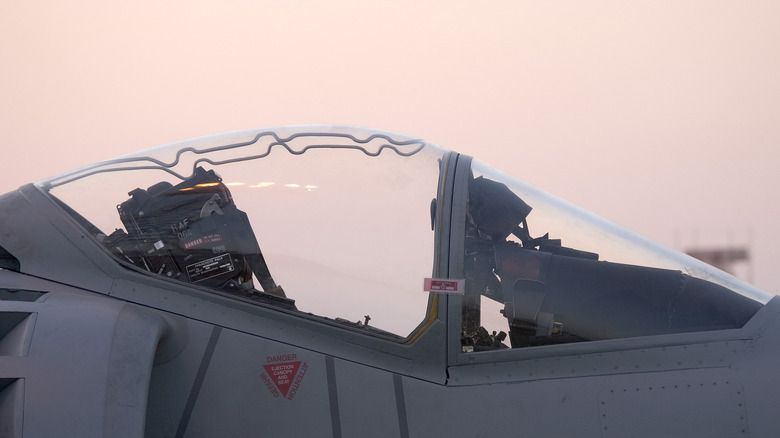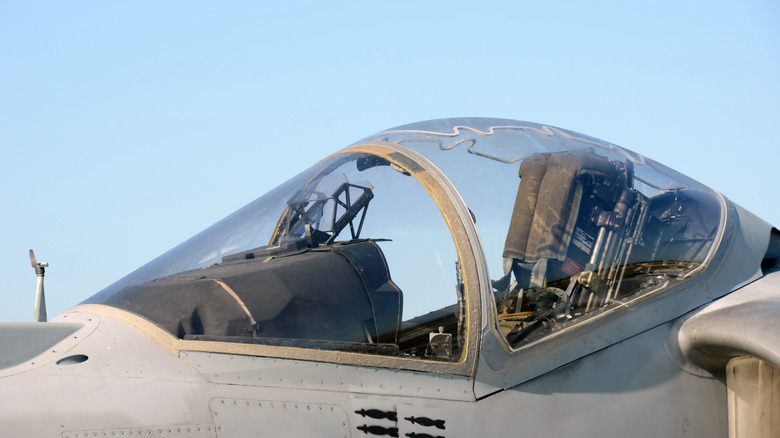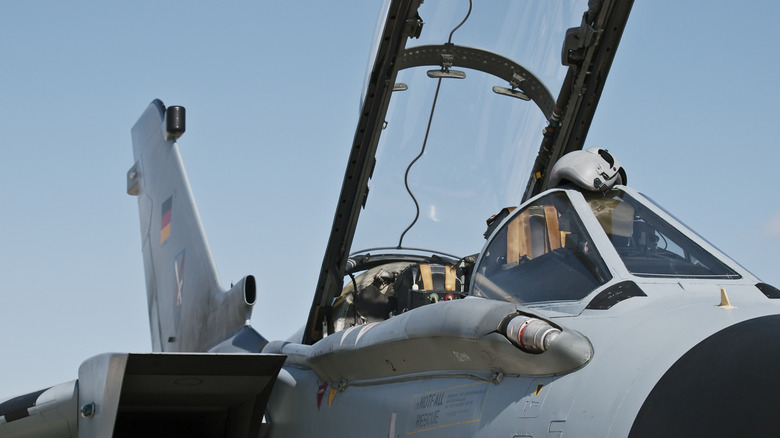Why Do Some Fighter Jets Have Zig-Zag Lines On The Canopy?
There's no denying that fighter jets are among the most complicated pieces of technology in today's militaries. Throughout the 20th and early 21st centuries, many of these formidable crafts have undergone improvements across the board, from the F-22 Raptor's incredible speed to the advanced stealth, armaments, and targeting systems that have enabled the F-35 to essentially redefine what dogfighting entails in the modern age. While most of these features are easy to recognize, some are more subtle and only noticed by those with sharp eyes. Among the latter are the zig-zag lines that often appear on some fighter jets' canopies.
The zig-zag lines in question are part of the Canopy Severance System (CSS) and are mainly installed for safety purposes. Since many of these fighter jets engage in combat during deployment and, as machines, may experience technical malfunctions whether in the air or on the ground, it is only natural that safety systems, such as ejection seats, are installed to help the pilot reach safety as quickly and safely as possible. These lines come in handy during canopy removal when the ejection seat is engaged, allowing the pilot to eject without colliding with the canopy.
Several parts make up the overall canopy removal system
Like any system found on a machine, the CSS is a combination of different parts that work together to safely shatter or cleanly cut the fighter jet's canopy. These systems vary by design and function, with some of the most common variations including components such as the Miniature Detonating Cord (MDC) and the Explosive Transfer Line (ETL).
In such systems, the MDC consists of shaped lines that carry explosives designed to fracture the canopy's material, while the ETL transmits the energy intended to activate the MDC. As you would expect, the activation sequence is usually initiated by the pilot in the event that they have to exit the fighter jet as quickly as possible.
At the core of the CSS system is a significant reduction in the time between when the pilot engages the ejection system and when the canopy releases. In other (non-CSS) systems, over 1,400 milliseconds elapse between the pilot pulling the seat ejection lever and the entire system responding and acting accordingly. With CSS, that time comes down to an impressive 20 milliseconds.
A few features should come as standard in these systems
Given the crucial role CSS plays in a fighter jet, several features are typically standard across different brands. Among the most important is a high speed of operation, given that the canopy is usually one of the main barriers between a fighter jet's cockpit and an escaping pilot. Second, the fragments should be ejected away from the pilot to reduce the danger the pilot is already in. Last but not least is the system's reliability, as some systems, such as the flexible linear-shaped charges used on the F-35, may expire or incur damage over time, reducing their reliability. In such cases, replacing it may be the best way to keep the system running optimally.
Depending on factors such as the fighter jet's canopy shape, the materials used to build it, or the different ways the canopy is integrated into the craft's seats, various versions of the CSS can be installed. Some systems may favor fracturing the canopy, while some might settle for cutting it clean. However, despite which variation of the system is used, most will include the telltale lines. Currently, fighter jets like the F-35 mentioned above and India's multirole aircraft, the Tejas Light Combat Aircraft, come with the system as a standard feature.


